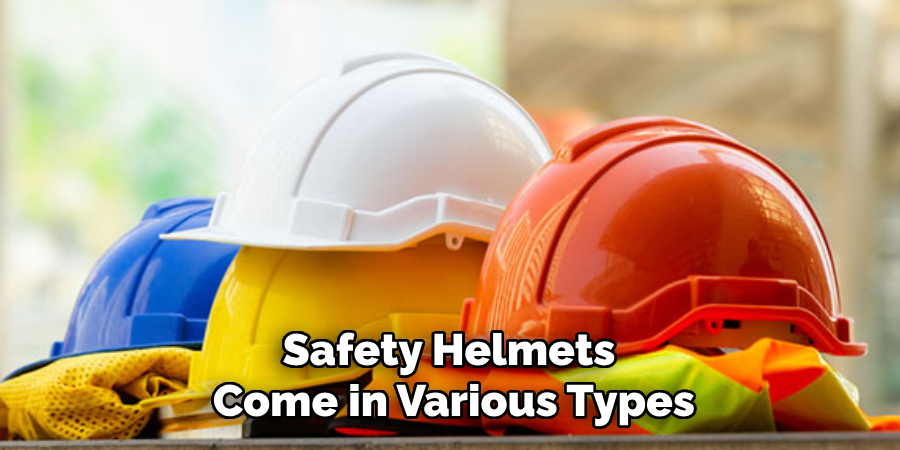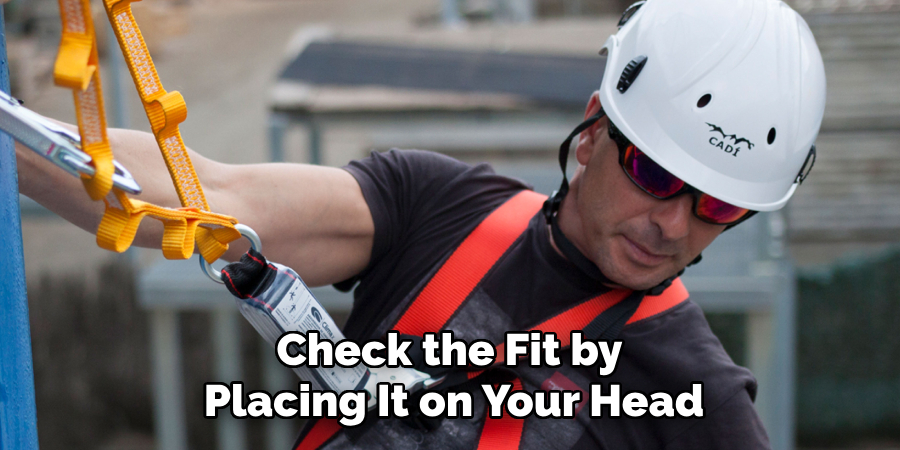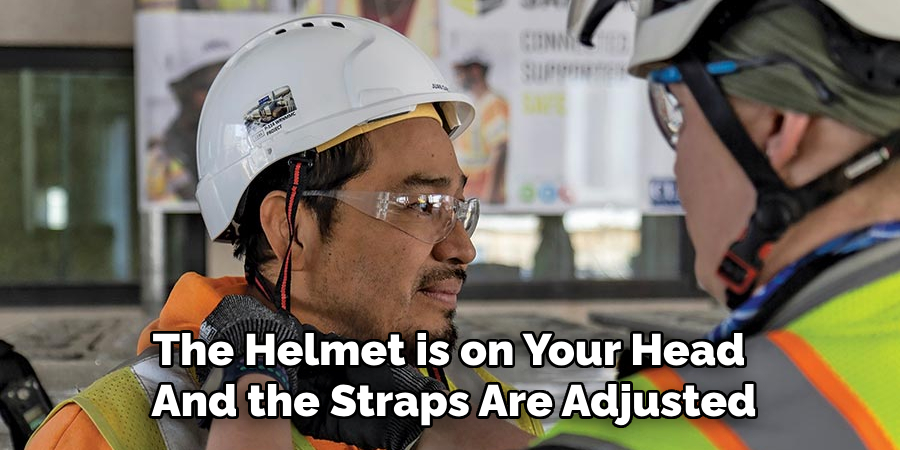Wearing a safety helmet properly is crucial for protecting the head from injury in various activities, from construction work to cycling and sports. Safety helmets are designed to absorb impact and minimize the risk of serious head trauma, making correct fit and usage essential. Whether for work or recreation, understanding how to wear a safety helmet involves more than just placing it on your head.

It requires adjusting the helmet to ensure a snug and comfortable fit, fastening the chin strap securely, and verifying that the helmet sits level and covers the forehead properly. By following these steps and adhering to manufacturer guidelines, individuals can maximize the effectiveness of their helmet in safeguarding against head injuries. This guide provides essential tips and techniques for correctly wearing a safety helmet, promoting safety and injury prevention in various environments.
Understanding Types of Safety Helmets
Safety helmets come in various types, each designed to offer protection for different activities and environments. The most common types include:
- Hard Hats: Typically used in construction and industrial settings, hard hats are designed to protect against impact and penetration hazards. They are usually made from high-density polyethylene or similar materials and often include accessories like face shields or earmuffs.
- Bicycle Helmets: Designed to absorb impact in the event of a fall or collision, bicycle helmets are lightweight and typically have ventilation holes to keep the wearer cool. They are made from expanded polystyrene foam covered by a plastic shell.
- Motorcycle Helmets: These helmets provide comprehensive protection, covering the entire head and sometimes the face. They are designed to withstand high impacts and come with additional features like visors for eye protection and padding for comfort.
- Climbing Helmets: Used by rock climbers and mountaineers, these helmets protect against falling rocks and impact from falls. They are lighter than industrial hard hats and have a snug fit to stay secure during climbing activities.
- Sports Helmets: These include helmets for activities like hockey, American football, and skiing. Each type is tailored to the specific risks associated with the sport, providing specialized protection to safeguard players from head injuries.

Selecting the Right Size Helmet
Choosing the right size helmet is a fundamental step in ensuring optimal protection and comfort. Here are some essential tips for selecting the right size helmet:
- Measure Your Head Circumference: Using a flexible measuring tape, measure the circumference of your head just above your eyebrows and ears. This measurement will help you determine the correct helmet size based on the manufacturer’s sizing chart.
- Try Before You Buy: Whenever possible, try different helmet sizes in person. Place the helmet on your head and ensure it sits level, covering the top of your forehead without tilting forward or backward.
- Check the Fit: A properly fitting helmet should be snug but not uncomfortably tight. It should not move around on your head when you shake it. Use the adjustable straps and padding to achieve a secure fit.
- Adjust the Chin Strap: The chin strap should fit snugly under your chin, ensuring that the helmet stays in place during an impact. You should be able to fit one or two fingers between the strap and your chin.
- Consider Helmet Shape: Helmets come in various shapes to cater to different head forms. If one helmet size feels uncomfortable, try a different brand or model that may better accommodate your head shape.
10 Methods How to Wear a Safety Helmet
1. Choose the Right Helmet for the Activity
The first step to wearing a safety helmet correctly is selecting the appropriate helmet for your specific activity. Different activities require different types of helmets, each designed to protect against particular hazards. For example, a bike helmet is designed to protect against falls and collisions, while a construction helmet is built to withstand falling objects and impacts. Ensure the helmet meets the safety standards relevant to your activity, such as CPSC for biking, ANSI for construction, or ASTM for various sports. Using the right helmet ensures you are adequately protected for the specific risks involved.
2. Check the Fit
A properly fitting helmet is crucial for effective protection. Before wearing your helmet, check the fit by placing it on your head. The helmet should sit level on your head, covering your forehead without tilting backward or forward. There should be about one to two finger widths above your eyebrows. The helmet should fit snugly but comfortably, without causing pressure points or discomfort. Most helmets come with adjustable fit systems, such as dial adjusters or sizing pads, to help you achieve the perfect fit. Adjust these mechanisms until the helmet feels secure and comfortable.

3. Adjust the Straps
Helmet straps are essential for keeping the helmet securely on your head. Start by adjusting the side straps so that they form a “V” shape around your ears. The sliders should sit just below your earlobes. Next, adjust the chin strap so that it is snug but not too tight. You should be able to fit one or two fingers between the strap and your chin. Make sure the buckle is fastened securely and positioned under your chin, not to the side. Properly adjusted straps ensure the helmet stays in place during impact and does not shift or fall off.
4. Perform a Stability Test
Once the helmet is on your head and the straps are adjusted, perform a stability test to ensure it stays in place. Shake your head side-to-side and up-and-down. The helmet should remain securely in position and not move excessively. If the helmet shifts, readjust the fit system and straps until it stays firmly in place. A stable helmet provides consistent protection, reducing the risk of injury in case of an impact. Regularly performing this test ensures the helmet remains secure throughout your activity.

5. Position the Helmet Correctly
The position of the helmet on your head is vital for effective protection. The helmet should sit level and cover the top of your forehead. It should not tilt backward, exposing your forehead, or forward, obstructing your vision. A level helmet provides balanced protection around your head, safeguarding both the front and back. Ensure the helmet’s front edge is just above your eyebrows, giving you a clear field of vision while protecting your forehead. Proper positioning is crucial for maximizing the helmet’s protective capabilities.
6. Use Helmet Accessories Properly
Many helmets come with accessories, such as visors, pads, and additional straps, to enhance protection and comfort. Ensure these accessories are used correctly according to the manufacturer’s instructions. For example, a visor should be positioned to shield your eyes from the sun without obstructing your vision. Padding should be adjusted or added to improve fit and comfort. If your helmet includes additional straps, make sure they are properly fastened and adjusted. Using accessories correctly enhances the overall effectiveness and comfort of your helmet.
7. Regularly Inspect Your Helmet
Regular inspection of your helmet is essential for ensuring its continued effectiveness. Before each use, check for any signs of damage, such as cracks, dents, or worn straps. Even minor damage can compromise the helmet’s ability to protect your head. If you notice any damage, replace the helmet immediately. Additionally, check the fit and adjust the straps as needed. Regular inspections help you identify potential issues early, ensuring your helmet provides optimal protection at all times.
8. Maintain Your Helmet Properly
Proper maintenance extends the life of your helmet and ensures it remains effective. Clean your helmet regularly using mild soap and water, avoiding harsh chemicals that can degrade the materials. Store your helmet in a cool, dry place away from direct sunlight, which can weaken the shell and straps. Avoid dropping or throwing your helmet, as impacts can cause invisible damage. Regular maintenance keeps your helmet in good condition, ready to provide protection whenever you need it.

9. Replace Your Helmet When Necessary
Helmets are not designed to last forever. Over time, exposure to sunlight, sweat, and impacts can degrade the materials, reducing their effectiveness. Most manufacturers recommend replacing your helmet every three to five years, even if it appears undamaged. Additionally, replace your helmet immediately after any significant impact, as the internal structure may be compromised. Keeping track of the age and condition of your helmet ensures you always have reliable protection.
10. Educate Yourself on Helmet Safety
Understanding the principles of helmet safety enhances your ability to protect yourself effectively. Take the time to learn about the different types of helmets, safety standards, and proper usage techniques. Stay informed about new developments in helmet technology and safety guidelines. Many organizations, such as the National Highway Traffic Safety Administration (NHTSA) and the American Society for Testing and Materials (ASTM), provide valuable resources and information on helmet safety. Educating yourself empowers you to make informed decisions and maximize your protection.
Conclusion
In conclusion, wearing a safety helmet correctly involves a combination of choosing the right helmet, ensuring a proper fit, and maintaining it well. Begin by selecting a helmet that meets the safety standards for your specific activity. Check the fit, adjust the straps, and perform a stability test to ensure the helmet stays securely in place. Position the helmet correctly on your head, use accessories properly, and regularly inspect and maintain the helmet. Replace the helmet when necessary and stay informed about helmet safety guidelines. Thanks for reading, and we hope this has given you some inspiration on how to wear a safety helmet!

